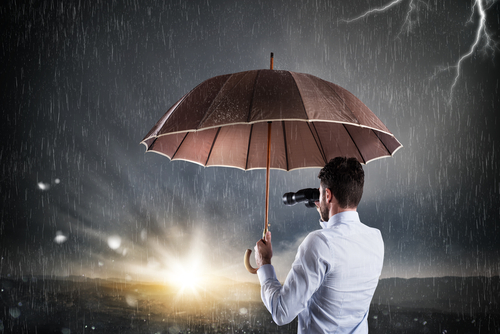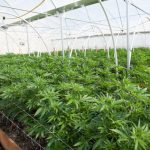As more and more states legalize the growing of marijuana, cannabis farmers are looking for ways to maximize their yield, increase profits, and stay competitive in this booming market.
Commercial growers have long grappled with whether to grow their cannabis crops indoors or outdoors.
Set up a warehouse, where you can have complete environmental control, but struggle with massive upfront infrastructure costs and ongoing overhead? Or choose to grow outdoors, keeping costs down but contending with environmental risks, limited harvests, and quality concerns?
Increasingly, marijuana growers are realizing that the answer to this question, and the solution to their goals, lies in the use of greenhouses equipped with light deprivation systems.
What is Light Deprivation?
In nature, marijuana responds to the changing daylight conditions that happen during the transition from summer to fall. The plants grow throughout the summer, and as the days get shorter, they take the shift as their signal to flower.
Light deprivation is a method of using blackout curtains on the walls and roof of a greenhouse to completely obscure daylight and deprive plants of light. By carefully imitating the natural changing of seasons, growers can force plants to flower regardless of what the calendar says and get several harvests in a single year.
Types of Light Deprivation Systems
In its simplest form, a light deprivation system can simply be a large tarp that a grower pulls over his plants at specified intervals. To force flowering, this is typically a cycle of 12 hours of light and 12 hours of darkness.
This is the least expensive way to use light deprivation, but it comes with a whole host of issues. Pulling tarps can be awkward, labor-intensive work that usually takes more than one person to accomplish. It’s also necessary to stick to a very tight schedule. If the timing of light and dark gets compromised, plants can suffer and flower too early or even not flower at all.
Although more expensive initially, an automated light deprivation system is a better option. This allows you to “set it and forget it,” meaning you don’t have to be at the greenhouse to manually raise and lower the curtains. By putting the blackout system on a timer, you won’t have to worry about the schedule being interrupted.
This level of automation also make it possible to control your other greenhouse systems, such as heaters, dehumidifiers, and ventilation.
Automated light deprivation systems include both interior and exterior varieties. Exterior light deprivation systems tend to be less expensive, but if you live in an area with harsh winters and plan to grow year-round, you’ll want to go with an interior light deprivation system. The curtains are mounted on the inside of the greenhouse, where high winds and snow won’t interfere with the operation of the motor and curtains.
Benefits of Light Deprivation Systems
Growers are discovering that there are numerous benefits to using a light deprivation system with their greenhouse setup.
• Year-Round Production
The most commonly cited benefit of using a light deprivation greenhouse system is the increased yield due to the ability to grow healthy crops year round. Because you’re essentially creating your own seasons and flowering timetable, you no longer have to be on Mother Nature’s schedule.
At a time when outdoor growers are still waiting for their buds to mature, your crop could already be hitting the market. Being able to grow year-round also allows more time to experiment and develop a signature strain. Both of these benefits can translate directly into more revenue for your business.
• Carbon Footprint Reduction
Growing cannabis indoors requires a great deal of energy. In fact, Denver’s Department of Public Health and Environment reported that fully 4% of Denver’s energy usage is due to marijuana cultivation.
In Oregon, utility company Pacific Power reported that the energy consumption of cannabis growers was causing a strain on the system, directly causing summertime power outages.
The California Public Utilities Commission studied the effect of cannabis on California’s energy consumption in 2012, and discovered that it was equivalent to the electricity usage of a million homes. This was before recreational cannabis was legal, so it’s reasonable to assume that usage has gone up even more since then.
While the common stereotype of marijuana growers tends to be that of a tree-hugging hippie, in reality, the cultivation of indoor marijuana is not a “green” endeavour at all.
Environmentalists and others who place value on earth-friendly choices are seeing more and more clearly how using greenhouses equipped with blackout systems can give them the same benefits of indoor grows but with a much smaller carbon footprint.
Bruce Bugbee, a professor of crop physiology at Utah State University, has stated that greenhouses use approximately one-third of the energy that indoor grows use. This echos the findings of Ludvig Svenssson, a light deprivation curtain manufacturer, who found that greenhouse utility costs were 50-75% lower than indoor grow utility costs.
• Less Overhead, More Savings
Closely related to the energy savings is the financial savings experienced with a light deprivation greenhouse. When reducing energy consumption, cost naturally goes down, as well. Ongoing monthly overhead is significantly less.
Startup costs are another important consideration. Estimates on how much it will cost to get a warehouse grow up and running vary, but Marijuana Business Daily has stated that the typical indoor grow comes in at approximately $75/square foot in start up costs while a new greenhouse build requires just $50/square foot. For a 10,000 square foot facility, that’s a $250,000 savings in establishing a new grow operation – certainly not chump change.
In Oregon, a state that currently has a million pound surplus of marijuana, consumers can get a gram of weed for less than the cost of a microbrew. Growers simply cannot expect to remain competitive with their pricing with the massive overhead required from indoor warehouse grows. Light deprivation greenhouse systems allow farmers to remain competitive through lower overhead, increased yields, and quality products that demand top-dollar even when faced with competition.
• Environmental Control
Crafting a high-quality product is all about creating a consistent, ideal environment for your plants to flourish in. In a light deprivation greenhouse equipped with an automation system, controlling temperature, ventilation, and other environmental systems is as easy as touching a button. Bump up the blue light spectrum to optimize the vegetative state or encourage plants to flower with a red spectrum boost. Walk away from your greenhouse in the afternoon knowing that the curtains will be rolling down regardless of whether or not you’re there to watch them.
This level of control is out of the question with an outdoor grow, where you’re always at the mercy of Mother Nature. A surprise thunderstorm might come sweeping through right before you were planning to harvest, damaging trichomes and creating a real risk of mold.
And once you’ve discovered that sweet spot of environmental stimulus for a particular strain to flourish, you can replication those conditions harvest after harvest. This is vital for farmers who have staked their reputation on high-quality, smooth-smoking weed. A bad batch can be not just a disappointment to the grower, but to customers who have come to expect a certain level of excellence out of the product. Discerning cannabis connoisseurs are quickly turned off by unpredictable product, where one batch smokes like a dream and the next is harsh and grassy.
The Best of Both Worlds
Light deprivation greenhouses blend the best features from outdoor and indoor grows, allowing you to harvest the free energy of the sun while creating an ideal protective environment for your plants. This results in an increased yield of consistently high-quality product at a much lower price. With this in mind, it’s clear to see why light deprivation greenhouses are the future of the cannabis industry.
Author Bio:
Mary Rosebrook works for Fullbloom Light Deprivation Greenhouses, an Oregon-based manufacturer and retailer of greenhouses and light deprivation accessories. Fullbloom helps commercial cannabis growers maximize their yields and increase profits. Ready to grow your cannabiz? Check out www.fullbloomlightdep.com for more info.
(304)





Leave A Reply